Remember that scene in Jurassic Park where they said, “Life finds a way?” Well, so does bad rotisserie chicken. Even when you think you’re making a safe grocery store grab, flaws can lurk beneath that crispy skin.
Before you bring home a potentially prehistoric-tasting bird, learn to spot the warning signs.
1. Suspicious Sell-By Date
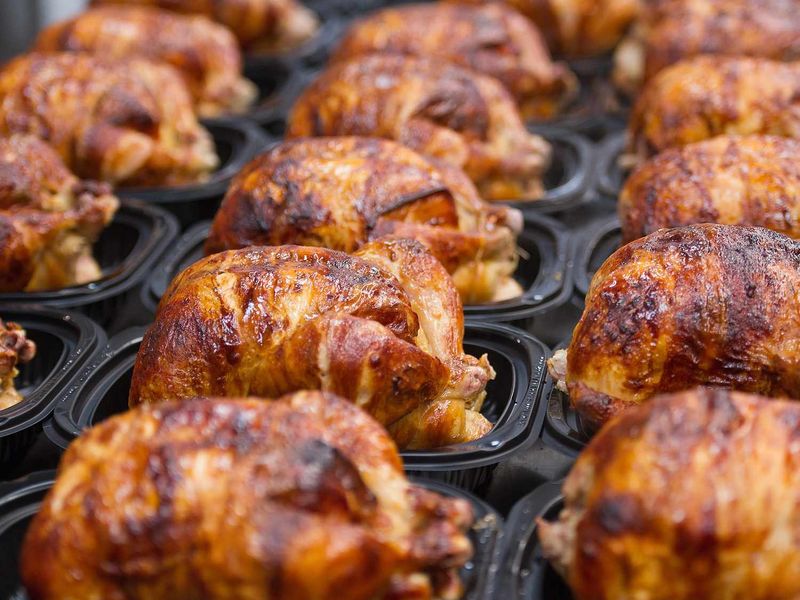
That tiny sticker tells a crucial story! If today’s date matches (or heaven forbid, exceeds) the sell-by date, walk away immediately.
Stores sometimes try moving older birds by discounting them. Your stomach will thank you for checking this simple detail before checkout.
2. Dull, Lifeless Color

Fresh rotisserie chickens boast a rich golden-brown hue that practically glows under store lights. Pale, grayish skin? Major warning sign!
Color indicates proper cooking and freshness. When that bird looks like it’s having a bad day, your taste buds will too.
3. Sitting Too Long Under Heat Lamps
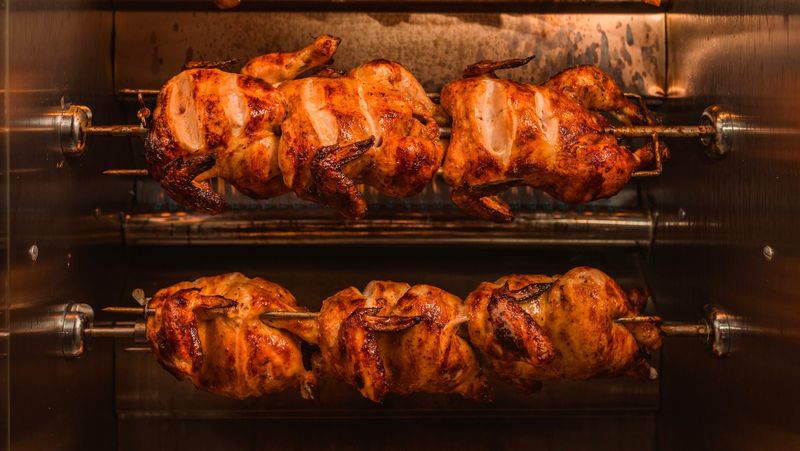
Notice those chickens that have been spinning for hours? Their skin shrivels and tightens while the meat dries out completely.
Ask an employee when the batch was cooked. Freshly made birds taste juicy and tender.
4. Flimsy, Leaking Container
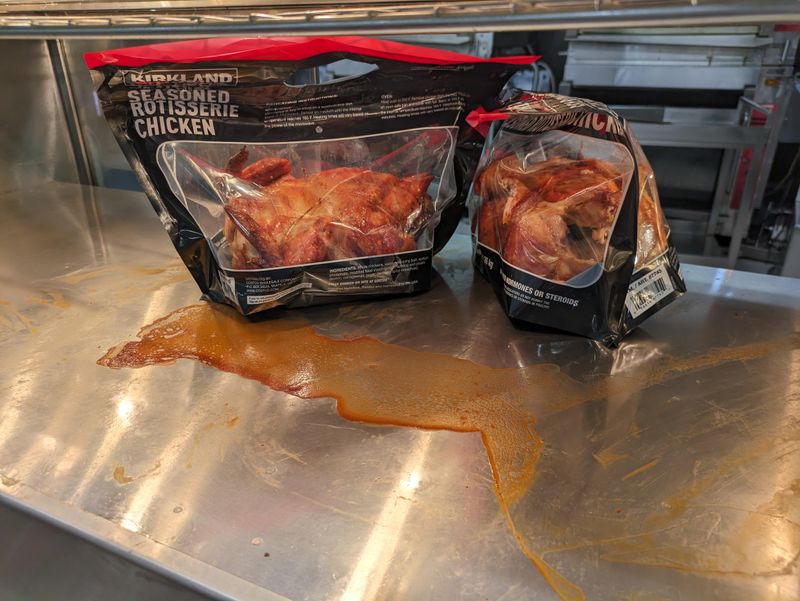
Quality packaging keeps your dinner safe! When juices escape through cracked containers, bacteria follow close behind.
Examine the bottom for suspicious pools of liquid. Cross-contamination happens easily in grocery stores, and those escaped juices might contain more than just chicken flavoring.
5. Funky, Sour Smell

Your nose knows trouble! Fresh chicken has a mild, pleasant aroma – nothing that makes you recoil in horror.
Any hint of sourness or ammonia means bacteria have already started their unwelcome dinner party. Trust your sniffer!
6. Chicken Smaller Than Your Fist
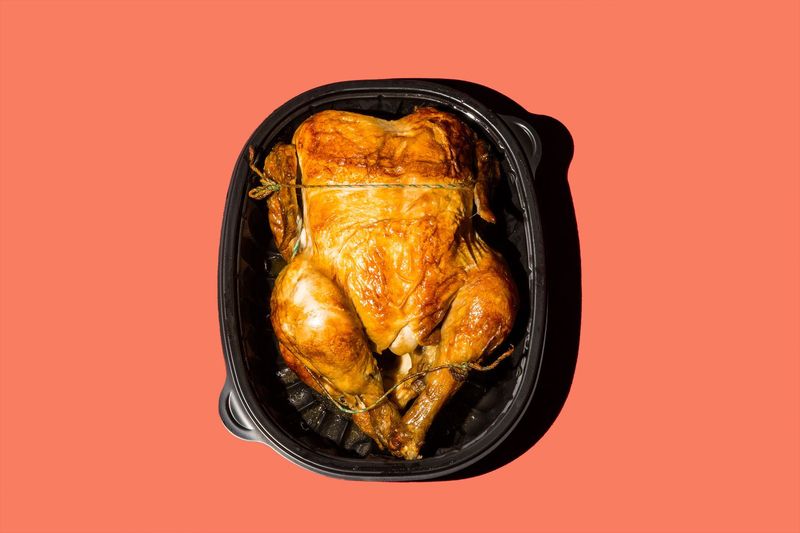
Size matters with rotisserie chickens! Suspiciously tiny birds often indicate poor quality or sneaky pricing tactics.
A decent rotisserie chicken should feed 2-4 people. When that bird looks like it came from a quail farm, you’re not getting proper value for your money.
7. Slimy Texture When Touched

Brave enough to poke that bird? Normal chicken feels firm yet tender. Slippery, slimy texture signals spoilage has begun.
This happens when bacteria multiply on the surface. No amount of reheating fixes this problem.
8. Weird Chemical Smell
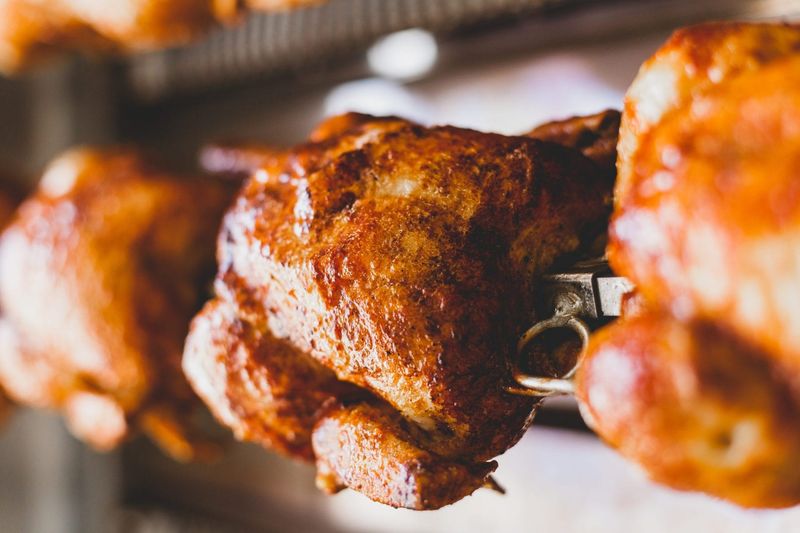
Fresh chicken should never smell like cleaning products! Some stores mask old birds with extra seasonings or preservatives.
That artificial, overly perfumed scent hiding beneath the herbs? Pure deception! Quality rotisserie chickens need minimal help in the aroma department.
9. Freezer Burns Or Ice Crystals
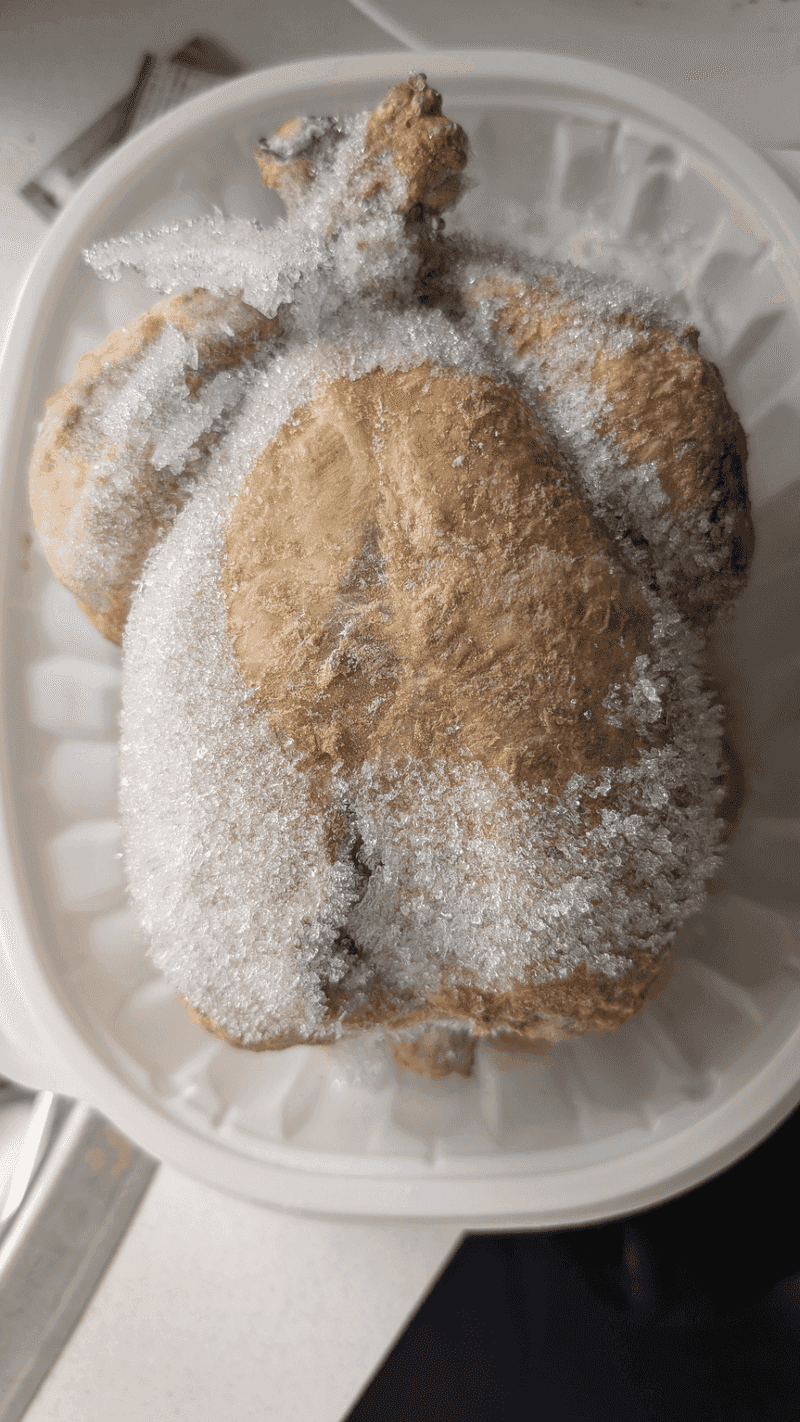
Spotted frost on that supposedly “fresh” bird? Run away! Some stores freeze and reheat unsold chickens from previous days.
Ice crystals or freezer burns reveal this sneaky practice. You deserve actually fresh chicken, not yesterday’s leftovers disguised as today’s special.
10. Unnaturally Bright Red Spots

Blood spots or unnaturally vivid red areas suggest incomplete cooking. Properly cooked chickens have consistent coloration throughout.
These concerning patches potentially harbor dangerous bacteria. Food safety 101: chicken must reach 165°F internally to kill pathogens that could send you running to the bathroom later.
11. Empty Warming Display
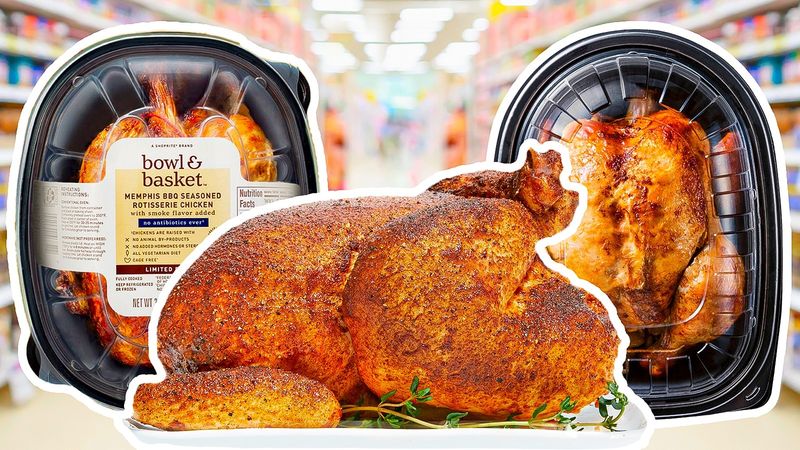
Weirdly, an almost-empty rotisserie case isn’t always good news! Sometimes it means you’re getting the last bird that’s been spinning since breakfast.
Busy displays with regular turnover ensure fresher chickens. When you’re the only customer and that lonely chicken looks desperate for adoption, question its backstory.
12. Greasy Film On Container Lid
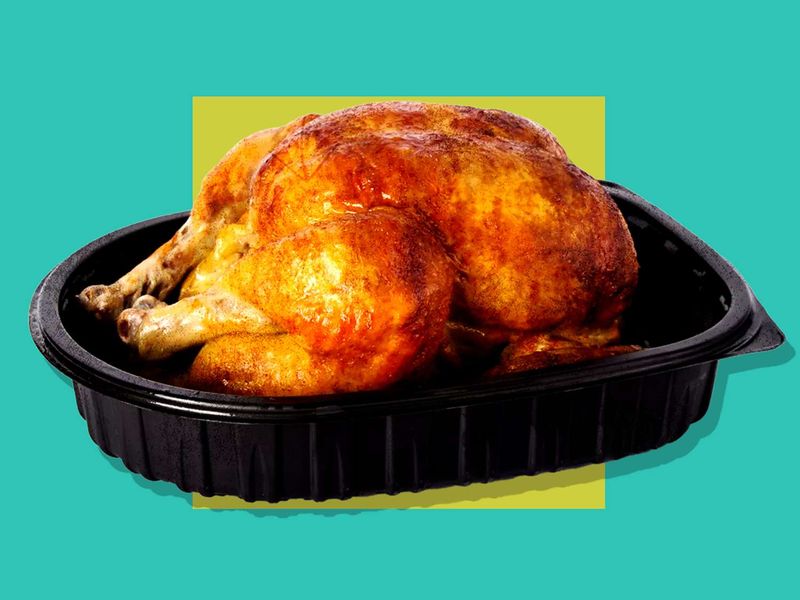
Check that plastic lid! Excessive grease accumulation suggests your chicken has been spinning way too long.
Fresh birds don’t leave thick, cloudy films that obscure visibility. When you can barely see through that container top, imagine what’s happening to the chicken quality underneath.
13. Rubbery, Tough Skin
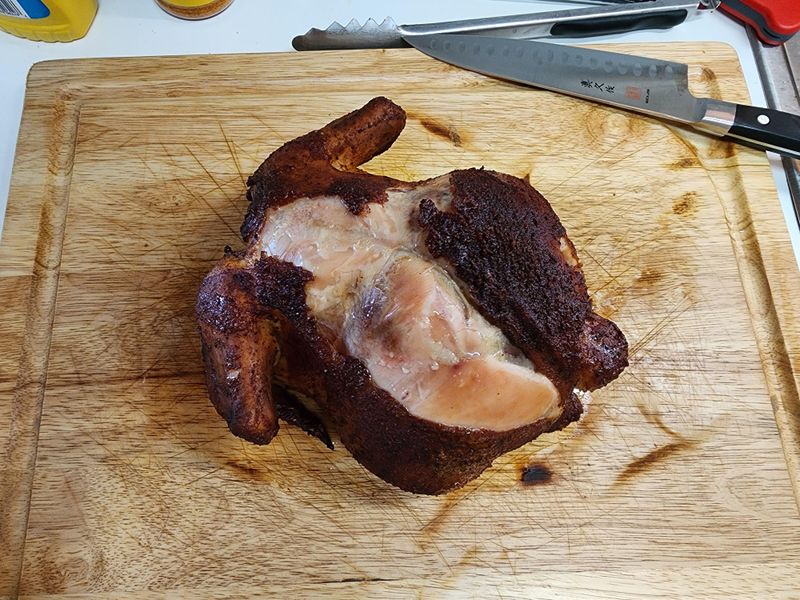
Perfect rotisserie skin should offer slight resistance before giving way with a satisfying crackle. Rubber-like, tough exterior means that bird overcooked hours ago.
Give the breast a gentle poke through the container. If it feels like you’re touching a tire, keep shopping!
14. Suspiciously Low Price
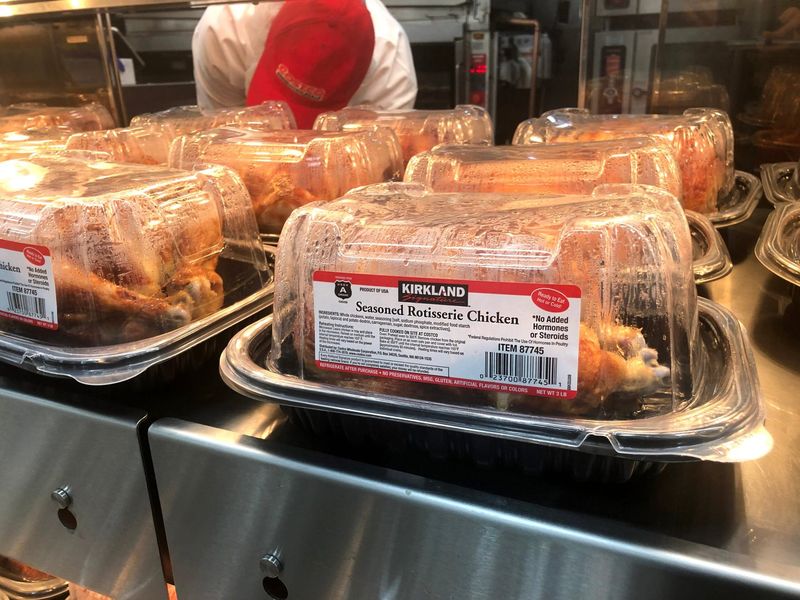
Bargain birds raise eyebrows! When that rotisserie chicken costs significantly less than competitors, ask yourself why.
Quality ingredients and proper cooking cost money. Super-cheap chickens often contain excessive sodium, questionable meat quality, or concerning additives to mask inferior product.

